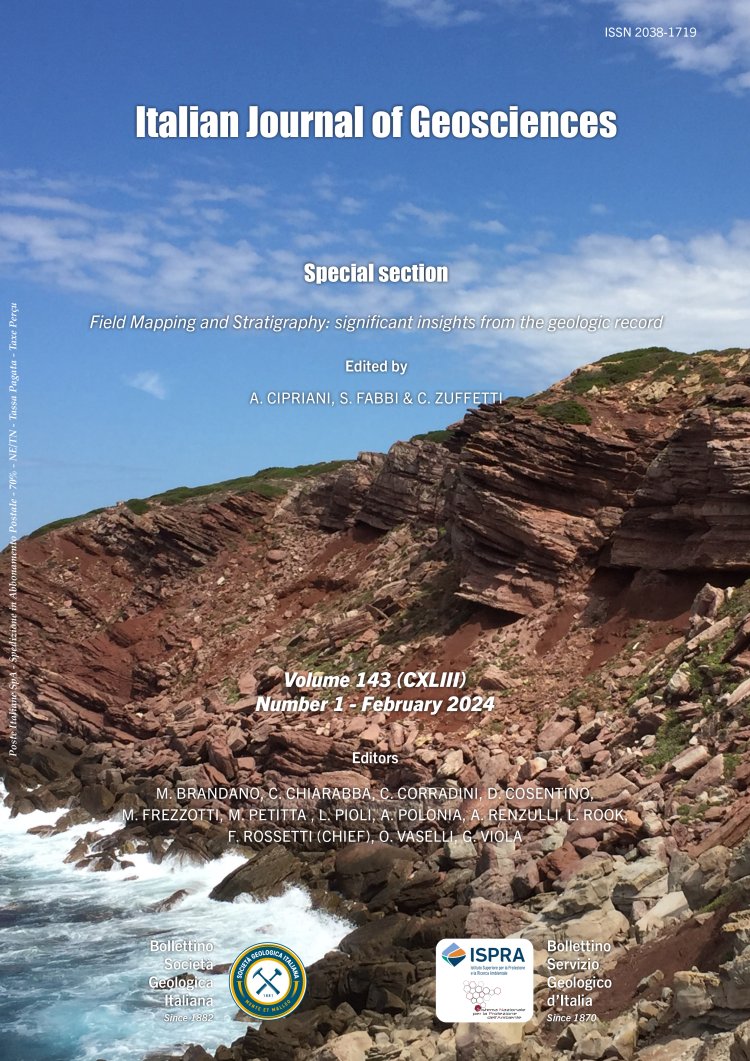

The Cala Viola-Torre del Porticciolo coastal area: a key tectono-stratigraphic site to unravel the polyphase tectonics in NW Sardinia
Niccolò Menegoni1, Angelo Cipriani2, Rudy Scarani3, Lorenzo Stori3, Paolo Citton4, Marco Romano5, Umberto Nicosia5 & Ausonio Ronchi3
1Ali I. Al-Naimi Petroleum Engineering Research Center (ANPERC), King Abdullah University of Science and Technology (KAUST), Thuwal, Saudi
Arabia.
2Dipartimento per il Servizio Geologico d’Italia - ISPRA, Roma.
3Dipartimento di Scienze della Terra e dell’Ambiente, Università di Pavia, Pavia, Italy.
4IIPG, Instituto de Investigación en Paleobiología y Geología (CONICET - UNRN), General Roca, Río Negro, Argentina.
5Dipartimento di Scienze della Terra, Sapienza Università di Roma, Roma, Italy.
Corresponding author e-mail: rudy.scarani.geo@gmail.com
Volume: 143 (2024) f.1
Pages: 75-104
Abstract
Along the coast between Cala Viola and Cala del Turco in NW Sardinia, an upper Palaeozoic to lower Mesozoic continental sedimentary succession is wonderfully exposed. For the first time, detailed geological mapping, coupled with facies analysis and meso-structural studies, was carried out, allowing to better define the Permian- Triassic stratigraphy and structural setting of this sector of Nurra region. Field work was coupled with drone-based aerial photogrammetry, which led to the production of Digital Outcrop Models (DOMs). A lithofacies subdivision of the stratigraphic units is proposed with the aim of making a formalisation of the Triassic Porticciolo conglomerate and Cala Viola sandstones units possible. The combination of “classical” and “digital” field methodologies led to the mapping of 462 faults, the recognition and characterisation of six main fault sets, and differently oriented folds. The analysis of topology and cross cutting relationship of fault networks has allowed us to identify at least eight deformation phases, possibly spanning from Permian to Pleistocene-Holocene. These new data allow us to reconstruct the complex tectonic history affecting NW Sardinia since the deposition of the middle Permian deposits to the Holocene, with the Permian and Triassic deposits recording the whole deformation phases affecting them since the latest Palaeozoic.
Keywords
Get Full Text Supplementary Material